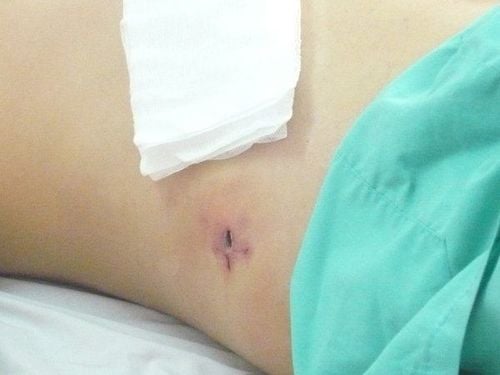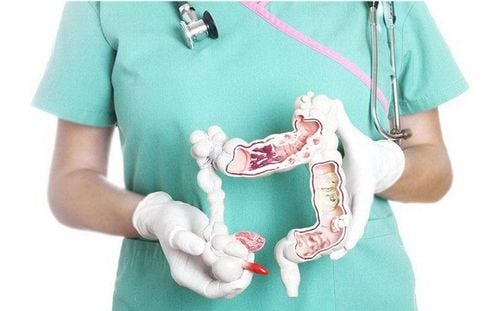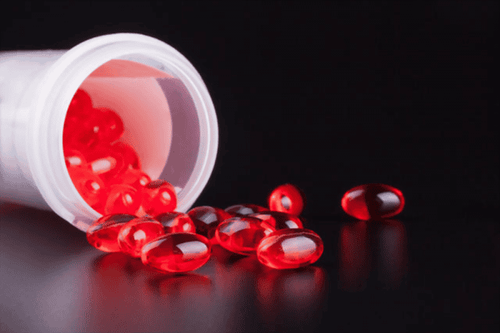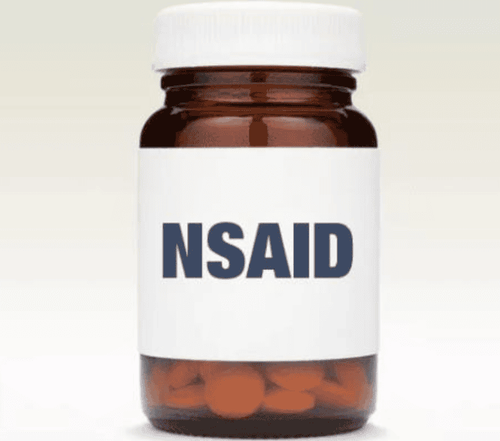This is an automatically translated article.
The article was professionally consulted with Specialist Doctor I Tran Quoc Vinh - Emergency Doctor - Department of Resuscitation - Emergency - Vinmec Nha Trang International General Hospital.Anal sphincter rupture is often caused by complications of surgical intervention in the anal sphincter area, after childbirth. When the anal muscle ruptures, the consequences lead to a loss of anal control to varying degrees.
1. What is anal sphincter?
The anal sphincter is composed of internal and external sphincter, the internal sphincter is innervated by the autonomic nervous system and the external sphincter is innervated by the voluntary nerve, capable of controlling human thoughts. The anal sphincter helps control the anus in the elimination of waste products.
Anal sphincter rupture can be caused by many causes, as a result of surgery to interfere with the sphincter system due to childbirth, trauma to the anorectal area, surgery to treat anal fistula.
The rupture of the anal sphincter causes anal incontinence, depending on the severity of the break, the ability to lose control varies. This greatly affects the quality of life of the patient, do not be subjective when encountering anal sphincter rupture, because this condition needs to be treated early. Anal sphincter suture is a measure to treat anal sphincter rupture, improving the quality of life of the patient.
2. How to treat anal sphincter rupture?
Anal sphincter anastomosis is a method of treating anal sphincter rupture as a result of surgery or trauma to the perineal area.
2.1 Indications and contraindications of anal sphincter anastomosis Indications: Anal sphincter anastomosis in case of loss of anal incontinence due to sphincter rupture after surgery, trauma, wound in the anorectal region. Perform sphincterotomy when the wound in the anus or perineum is stable, at least about 4 months after the injury or last surgery, the patient is awake, the nervous system supplying the sphincter is still intact. intact and in good working order.
Some contraindications include:
Damage to the sphincter is too extensive, over half the circumference of the anus. Wounds in the anal and perineal areas have not healed completely in less than 4 months. The anal autonomic eye is damaged by nerve damage. The elderly and weak patients are not healthy enough to perform surgery, the anal sphincter muscle tone is poor. Infections of the anal and perineal areas have not been treated stably.

Explain to the patient and family the local disease and general condition of the patient, clearly explain the surgical method will be performed, complications, complications, sequelae may be encountered due to pathology, surgery, anesthesia, pain relief, due to the patient's location may occur. Before the surgery, enemas can be removed with bleach, if the patient is too nervous, use sedatives. On the day of surgery, you need to fast before the surgery. Tests to diagnose and assess the patient's general condition before surgery. Performing surgery
The patient is lying in the gynecological position. Anesthesia: Depending on each case, choose an appropriate anesthetic method such as general anesthesia or regional anesthesia. The most commonly used is spinal anesthesia. When the patient is in a state of anesthesia or complete anesthesia, an incision is made around the anal fold or at the edge of the anus or an incision in the shape of a spoke. Remove scars from the skin and mucous membranes and separate the round muscle mass from the adherent fibrous tissue. Stitching of the anal sphincter: Directly connecting the muscle with U-shaped stitches, with slow-dissolving sutures. After suturing, it is necessary to check and evaluate that the anal canal is not narrow. Stitch the anal mucosa: Stitch from the inside to the outside, usually using slow-digesting thread. Can be sewn with a squeegee or with a separate stitch. Finally, suture the subcutaneous layer and the skin closes the incision. 2.3 Monitoring and post-operative care Monitor the patient's general condition such as: pulse, blood pressure, breathing rate, body temperature, consciousness. On-site monitoring: Bleeding, discharge, pain after surgery. Patients who receive spinal anesthesia usually have urinary retention in the first day, so a bladder catheter should be placed in order to allow the patient to recover and to facilitate keeping the surgical area clean. Local care: Keep the incision clean, especially after defecation, wash the anus and pat dry. Do not soak the anus to avoid poking the sutures. Use of drugs: Usually 7 days of antibiotics of metronidazole type. Patients fasted intravenously for 4-5 days, pain relief is usually paracetamol, the drug makes the stool drier for about 3 days. Start eating again 4-5 days after surgery, when laxatives are given. It is advisable to move around soon after surgery. 4 weeks after surgery, instruct the patient to exercise the sphincter by simple movements such as holding the sphincter in defecation.

2.4 Some complications and treatment Bleeding: Uncommon, because the wound has been actively sutured. But if there will be bleeding in the anal area or anal pain, you will need to use hemostatic medicine. Pain after surgery: Pain usually occurs in the first few days, treated with pain reliever paracetamo l 10-15mg/kg body weight. Incisional infection: The postoperative area is swollen, hot, exudes a foul odor, pain increases and the patient has a fever. This condition is the main reason for the failure of surgery. To avoid the risk of infection, keep the hygiene as clean as possible. If the incision is infected, change the dressing 2-3 times daily, use broad-spectrum antibiotics. In the case of sutures connecting the sphincter when the incision becomes infected, the suture will need to be re-operated after the wound has stabilized. At least 4-6 months. Often, after surgery or perineal wounds, there is an anal sphincter rupture that is easily ignored by the patient, and over time, the condition makes the ability to control the anus, this seriously affects the quality. patient's life. Therefore, from the day when there are signs of anal sphincter rupture after surgery or anal trauma, it is necessary to examine and treat early.
=>> Advice from Specialist Doctor I Tran Quoc Vinh - Emergency Doctor - Department of Resuscitation - Emergency - Vinmec Nha Trang International General Hospital : Anal sphincter rupture after surgical interventions/ Surgery such as childbirth, treatment of hemorrhoids, anal fistula, .. will cause symptoms of decreased or loss of control in defecation. You don't need to see a doctor right away, but you need to get checked out early. Therapeutic intervention after the initial lesion is stable usually after at least 4 months.
Please dial HOTLINE for more information or register for an appointment HERE. Download MyVinmec app to make appointments faster and to manage your bookings easily.














